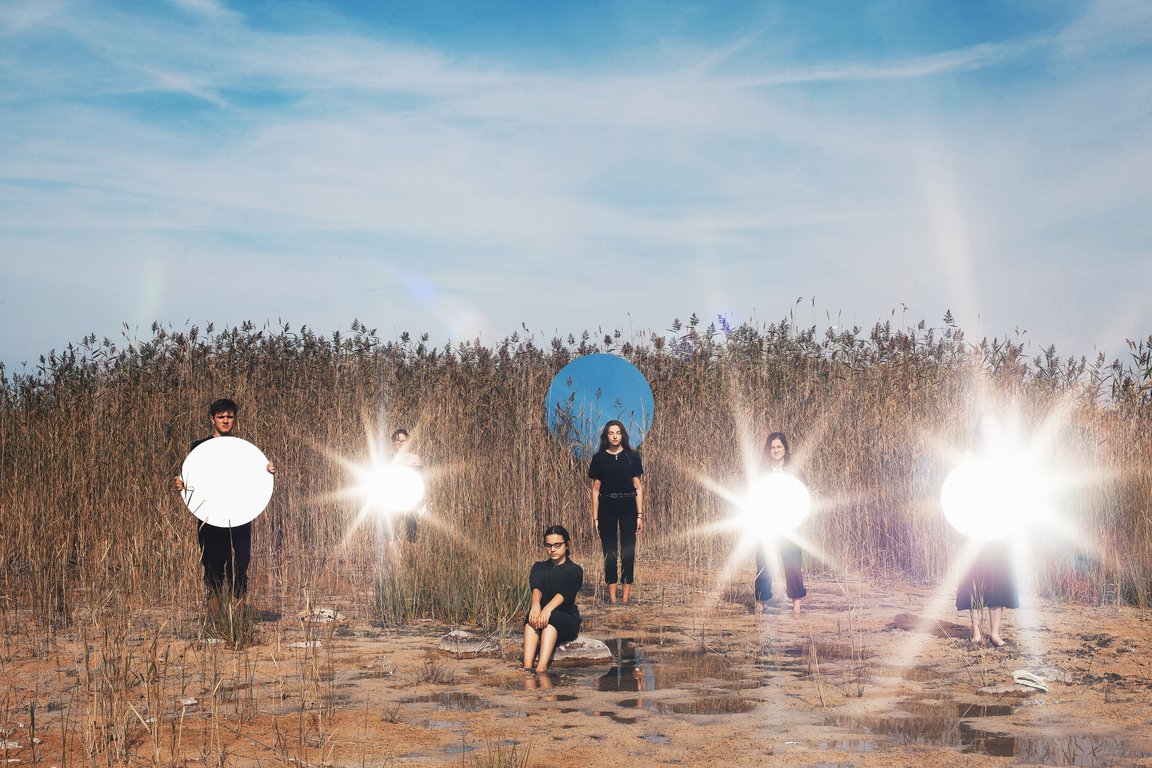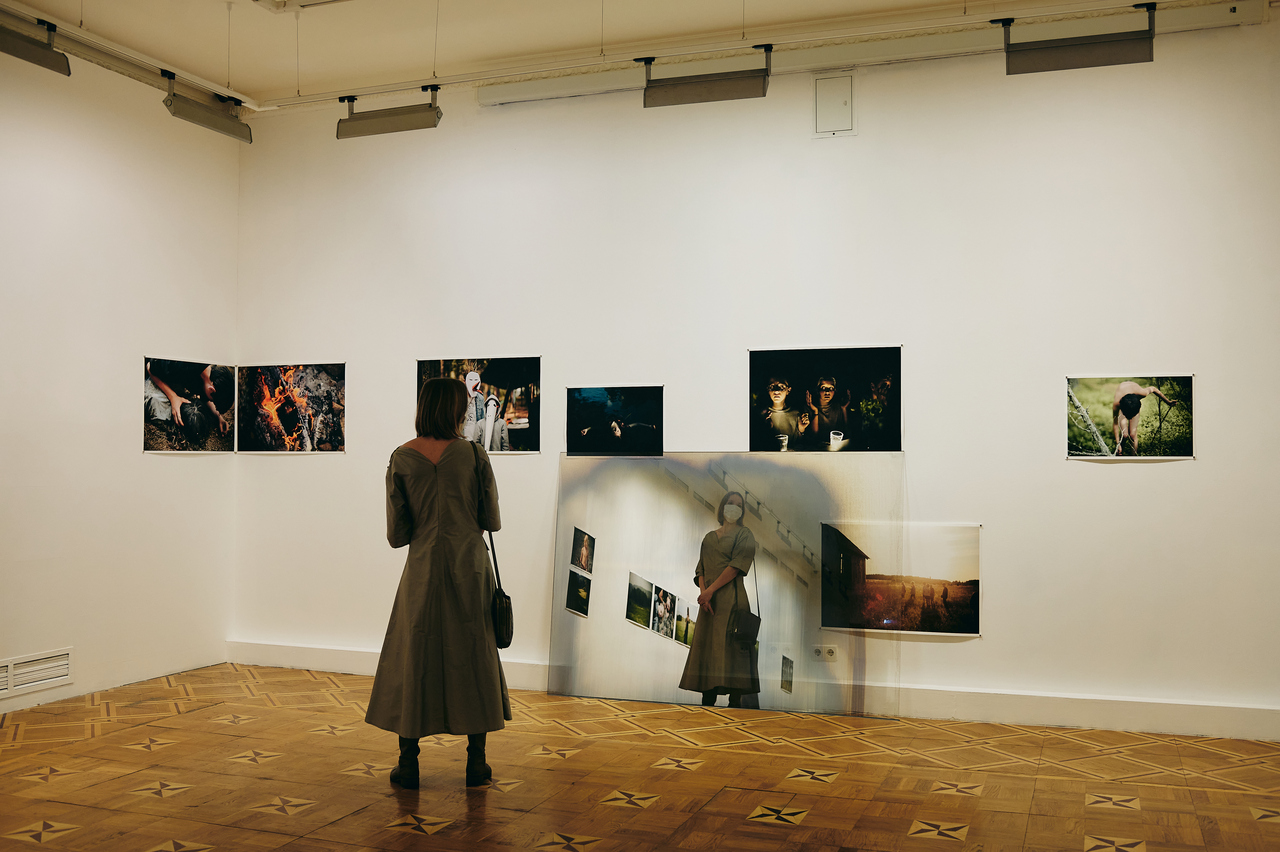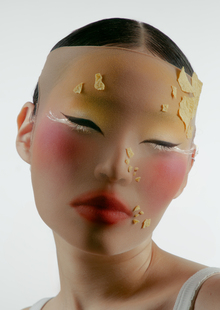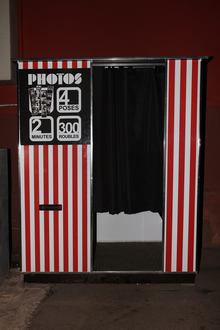
And I dreamt that my heart didn’t hurt…
«And I dreamt that my heart didn’t hurt…» is a personal exhibition of photos by Xenia Plotnikov. She was shown in the Catherine Cultural Foundation from 19 January to 22 February 2022.


Memory is a desert that we have in our imagination. Leonid Tishkov
Photos for the project «I dreamt my heart didn’t hurt…» I was filming for ten years at Campa. I was initially stunned by a lot of things: the connection between humans and nature, the openness and vulnerability of all, the sense of the fragility of time and space, all of which I didn’t want to lose. And the most important thing I did was document the history of the camp. Documentarity is one of the key properties and at the same time one of the main paradoxes of photography. The photograph promises objectivity, but it doesn’t keep it. It’s meant to be a reminder, but in fact it replaces a memory over time, becomes an illusion that we believe in. The project gradually focused on memory, its properties and the role of photography in memory formation. List all the names, record all the stories, and don’t lose anything — that’s why I started taking pictures. Thousands of them. But can nothing really be lost? As we were working on the exhibition, I was increasingly convinced that by collecting images into a single stream, we were not saving, but erasing the past, replacing it with later images. We cover our memories with layers of new paint.
There are two portraits made at 12 years of age in the first exhibition room. This is a metaphorical travel framework that the exhibition offers an audience.
The scenery photos in the second room introduce the audience to Camp Camchatka and the people in it. When we look at rivers, fields, forests, and children in this environment, it’s like we’re falling into a lost fairy tale world — it’s a feeling of what children are going through in a camp — with experience going beyond themselves, joining people and the world around them. It was this experience that the author wanted to record at the beginning of the project, and the photograph became a form of documentation, memory preservation.
Mirage is an optical phenomenon in an atmosphere in which the distant seems close.
When we think about the connection between photography and memory, we can initially imagine this connection quite sentimental: the photo is a teleport that allows us to move quickly into the desired space and time. She, like a mirage, gives us the illusion of touching a distant, past, gone. The third room is an opportunity to look at photos differently. By looking into the mirror — a meaningful element of the hall’s display — and by chance seeing images in it, the viewer can sense the complexity of the connection between photos and memories.
The photograph promises objectivity and documentation, but it doesn’t keep it.
The fourth room exhibition is about documenting the photo as a medium. We have mentioned earlier that at first glance a photograph may be perceived by a human being as a way to return to the past, to restore it in every detail. Is that just how this connection works? The Doctor of Psychological Science, Veronica Nurkov, notes that «as opposed to physical objects, memories do not have a clear form. These aren’t canned cans where the experience is safely sealed. Moreover, many of the same brain processes are involved in memory and imagination.» In the fourth room of the exhibition, there’s a lot of different sizes of photos, and they look like a file of events, faces, images. In the centre of the hall is a table with objects (bills, notes, scripts, etc.) from the camp. These things help you find the skeleton of memories, its foundation. But the thin system collapses in front of the eyes, there are too many photos, and instead of forming into a complete narrative, they twist into a vortex of images and perhaps finally replace the original memories.
The idea of documentation and retention of experience through photography is gradually giving way to reflection on the relationship between photography and memory. The fifth hall is a projection installation, an endless stream of photos falling into fragments that change in front of the viewer like a landscape outside a speed train window, increasingly dragging images into a vortex that resemble fleeting memories that are unable to return.
In the sixth room, the only work shown was a group portrait made with children for the tenth year of filming the project. At the center of the song is a large blue circle, similar to a mirror reflecting the sky, and it is on the wall opposite the photograph. At the heart of some memory technicians is the recommendation to «attach» what you want to remember, to something material, well-known, simple — to the street on which you grew up, to the pocketful of keys, to the watches on the wall. It creates memory halls where everything is in place, and nothing is lost. The blue circle in the sixth room is exactly the kind of object, the point that was designed to hold back memory.
Xenia Plotnikov: «I’ve spent ten years going to „Camchatka“ and taking many thousands of photos in the hope that they’ll save all my memories. Now I don’t remember the events, it’s the pictures themselves. Trying to understand the connection between photography and memory, I came up with the idea that a picture would replace a memory rather than bring it back to memory. With this conclusion, I took a picture hanging in the last room, looking at the big blue circle, and I remembered. Now the blue circle becomes the finals of the exhibition, and perhaps it can become a point of recollection for viewers.»
Photos: Xenia Plotnikov Architectural: Olena Grankin, Alexander Barmenkov Production: Sophia Aršinov Press Preparation, Print: Polina Rukavickin / Archive Lab Projection: Ilya Ryzhkov Music: Varvar Chirkin Dizein: Eugenia Tamm Cartelwork: Dmitry Semkov / Kavergin Workshop Maquet of the Exhibition Catalogue: Andrei Kondakov Coordinator: Anastasia Korotkova
We thank Philip Bachtin, the leaders and the children of Camp Kamchatka, all members of the crowdfanding campaign on Planeta.ru, Dmitry Merkulov, Elena Vanin, Cyrilla Kulagin, Olga Zaitsa, Pauline Vedenapina, Lila Brinis, Philippe Dyadko, Anna Dziadko, Vasilia Zorkogo, Oleg Cerbaev, and the Kwadrattruba workshop for their assistance in the preparation of the project.



